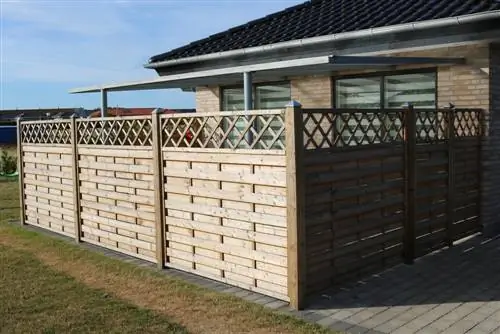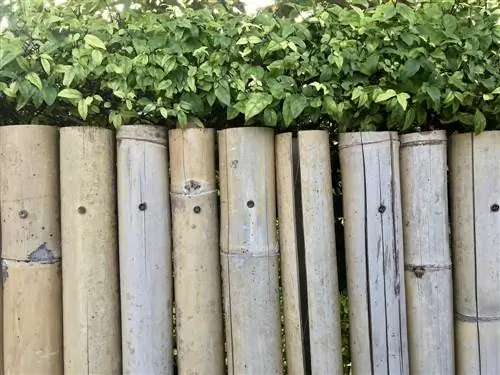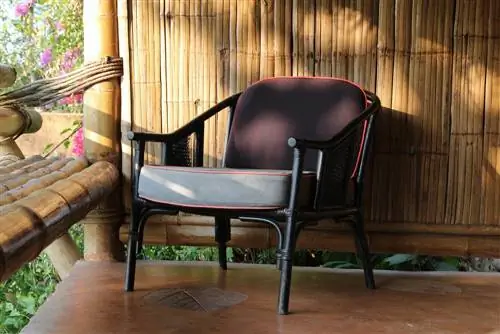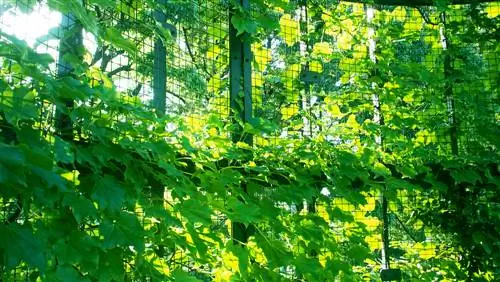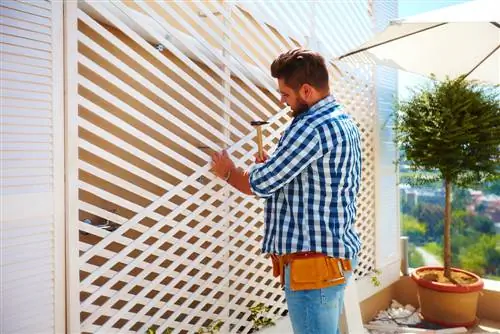- Author admin [email protected].
- Public 2023-12-16 16:46.
- Last modified 2025-01-23 11:21.
With a decorative privacy screen, you can create a relaxing idyll for undisturbed hours of leisure, even in a small garden. When installing, you should not only think about sunshine and blue spring skies, but also about the unleashed forces of autumnal squalls.

How can I securely attach my privacy screen in the garden?
To securely attach a privacy screen, color-matching fastening loops, thick square pieces of wood with drive-in sleeves, metal angle fittings, storm anchor posts or metal fittings and carabiners can be used, depending on the material and positioning of the privacy screen.
Attach plastic privacy mats
Coloured plastic mats, which are used in many places on balconies and terraces as privacy screens, are very easy and quick to install. In order to ensure a secure hold as discreetly as possible, there are color-matching fastening loops that are reminiscent of cable ties in their functionality. These can easily be wound through gaps in the metal railing of a balcony or around other building elements. Make sure that the attachment is as tight as possible, otherwise the flapping of a privacy screen in the wind can become an annoying background noise over time.
Safely stabilizing privacy walls made of fence elements
Due to their large attack surface and relatively low weight, privacy screen elements made of wood are usually particularly at risk during storms. For the stable fastening of these fence elements, sufficiently thick square timbers should be used, with metal drive-in sleeves driven deep into the ground to hold them in place. If these wooden walls connect directly to a house wall, special metal brackets can be used as fittings to ensure a firm hold. You can achieve particularly high stability with wooden fence elements if they are secured at the sides by slanted storm anchor posts. Significant factors for the stability of a wooden privacy wall are:
- the quality or degree of weathering of the wooden elements
- the thickness of the screws used
- the impact depth of the anchor sleeves
- positioning in protected areas or particularly exposed wind corridors
Sun sails are particularly at risk
In terraced house gardens, an awning is often used as a privacy screen against prying eyes from the neighboring balcony. This is often installed in a hurry in the summer and then often carelessly forgotten in the fall. It doesn't even take particularly strong gusts of wind to send awnings tied to tree branches with strings on a long journey. It's better to be on the safe side and screw your awning used as a privacy screen to a house wall or a wooden post with metal fittings. Fastening sets equipped with carabiners and hooks also make it easier to remove the sun sails at the end of the garden season and store them safely.
Tip
Securely attaching privacy screens is not just about the material value that needs to be secured. If property or personal injury occurs as a result of a privacy screen being carried away by the wind, you can sometimes be held liable if breaches of duty are proven.

